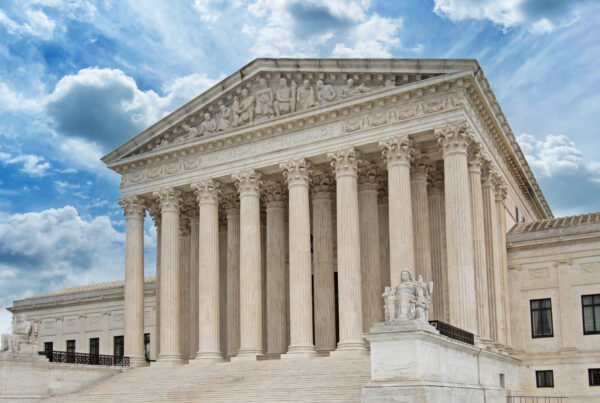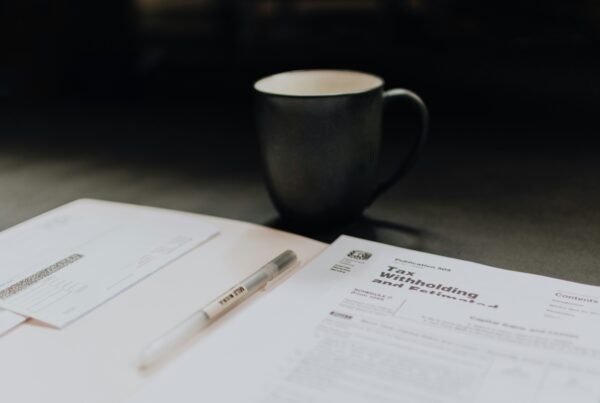The SBA has previously stated that PPP Loans over $2 million, including affiliates, would be under much more scrutiny. In line with this statement, two additional forms titled SBA Form 3509, Paycheck Protection Program Loan Necessity Questionnaire (For-Profit Borrowers), and SBA Form 3510, Paycheck Protection Program Loan Necessity Questionnaire (Non-Profit Borrowers) have surfaced. Neither form has officially been released on the SBA website.
These forms list numerous questions assessing the borrower’s business activity and liquidity, allowing the SBA to evaluate the good-faith certifications made by the borrower on their initial PPP Loan application that economic uncertainty made the loan request necessary to support their ongoing operations.
Upon receipt from the Lender, the borrower has 10 days to return the completed form back to the lender along with any supporting documentation. It appears that the lenders are not required to validate any of the borrower’s responses. The lender must upload the information to the SBA PPP Forgiveness Platform within 5 days of receipt from the borrower.
After this form is submitted, SBA may request additional information, if necessary, to complete the review. Failure to complete the form and provide the required supporting documents may result in SBA’s determination that the borrower was ineligible for either the PPP loan, the PPP loan amount, or any forgiveness amount claimed, and SBA may seek repayment of the loan or pursue other available remedies.
WG Commentary:
The SBA appears to be modifying the rules once again. The certification on the initial PPP Loan Application simply stated, “Current economic uncertainty makes this loan request necessary to support the ongoing operations of the Applicant.” The questions below suggest that a much higher level of scrutiny may be required. While the SBA did not issue a bright line test, the questionnaire seems to suggest that the SBA is leaning towards a more formulaic approach.
The timing of when borrowers can expect this form is unknown – will it be after the forgiveness application? Or perhaps it will be issued soon, as part of a ‘scare tactic’ to discourage large companies from applying for loan forgiveness. Regardless, a 10-day turnaround is very short, and it is uncertain if flexibility will be granted.
The initial wording of these forms suggests there may be some planning opportunities in terms of choosing between an 8-week or 24-week covered period. As these forms surfaced without any formal announcement, many aspects are still unclear.
What is clear is that more guidance will be needed from the SBA. WG continues to monitor the situation and will issue updates as they become available. Stay tuned.
See below for a listing of the questions found on SBA Form 3509 (For-Profit Borrowers).
Business Activity Assessment
1. Provide answers and supporting documentation for questions 1.A and either 1.B or 1.C:
A. What was Borrower’s gross revenue in the second calendar quarter (Q2) of 2020?
B. If Borrower existed in Q2 2019, what was Borrower’s gross revenue in Q2 2019?
C. If Borrower did not exist in Q2 2019, what was Borrower’s gross revenue in the first calendar quarter (Q1) of 2020?
2. A. Since the COVID-19 National Emergency Declaration issued by President Trump on March 13, 2020, has Borrower been ordered to shut down by a state or local authority due to COVID-19?
B. If the answer to 2.A is YES, which state or local authority issued the shutdown order?
C. If the answer to 2.A is YES, provide start and end dates of the shutdown order (if ongoing, write “present” under “End”).
3. A. At any time since March 13, 2020, has Borrower been ordered to significantly alter its operations by a state or local authority due to COVID-19?
B. If the answer to 3.A is YES, provide start and end dates of the order to alter its operations (if ongoing, write “present “under “End”).
C. If the answer to 3.A is YES, how were Borrower’s operations altered due to the order? (select all that apply)
i. The number of people permitted in a location at one time was reduced or capped.
ii. Service was restricted to outdoors.
iii. Employee workspaces were reconfigured.
iv. Other (please describe).
D. If the answer to 3.A is YES, what were Borrower’s approximate additional cash outlays for these mandatory alterations?
4. A. At any time since March 13, 2020, has Borrower voluntarily ceased or reduced its operations due to COVID-19?
B. If the answer to 4.A is YES, provide start and end dates when Borrower voluntarily ceased or reduced operations (if ongoing, write “present” under “End”).
C. If the answer to 4.A is YES, why did Borrower voluntarily cease or reduce operations? (select all that apply)
i. Employee(s) contracted COVID-19.
ii. COVID-19 significantly disrupted Borrower’s supply chain (e.g., a supplier of goods or services that are essential to Borrower’s operations was unable to deliver due to COVID-19).
iii. Other (please describe).
5. A. At any time since March 13, 2020, has Borrower voluntarily altered its operations due to COVID-19 (other than ceasing or reducing operations)?
B. If the answer to 5.A is YES, provide start and end dates when the voluntary alterations were in place (if ongoing, write “present” under “End”; if staggered, provide multiple start and end dates).
C. If the answer to 5.A is YES, how were Borrower’s operations voluntarily altered? (select all that apply)
i. The number of people permitted in a location at one time was reduced or capped.
ii. Service was restricted to outdoors.
iii. Employee workspaces were reconfigured.
iv. Other (please describe).
D. If the answer to 5.A is YES, what were Borrower’s approximate additional cash outlays for these voluntary alterations?
6. A. Between March 13, 2020 and the end of the loan forgiveness covered period of the PPP loan, did Borrower begin any new capital improvement projects, not due to COVID-19?
B. If the answer to 6.A is YES, what were Borrower’s approximate cash outlays for those projects?
7. What is Borrower’s primary six-digit NAICS code?
8. Optional – provide additional comments on any question in this Business Activity Assessment section.
Liquidity Assessment
1. As of the last day of the calendar quarter immediately before the date of Borrower’s PPP loan application, how much did Borrower own in cash and cash equivalents? Provide supporting documentation.
2. A. Between March 13, 2020 and the end of the loan forgiveness covered period of the PPP loan, has Borrower paid any dividends or other capital distributions (other than for pass-through estimated tax payments2) to its owners?
B. If the answer to 2.A is YES, what was the total amount of all dividends or other capital distributions between March 13, 2020 and the end of the loan forgiveness covered period of the PPP loan? Provide supporting documentation.
3. A. Between March 13, 2020 and the end of the loan forgiveness covered period of the PPP loan, has Borrower prepaid any outstanding debt (i.e., paid before contractually due)?
B. If the answer to 3.A is YES, what was the total amount of all debt prepayments between March 13, 2020 and the end of the loan forgiveness covered period of the PPP loan? Provide supporting documentation.
4. A. During the loan forgiveness covered period of the PPP loan, were any of Borrower’s employees compensated in an amount that exceeds $250,000 on an annualized basis? (Compensation for this purpose covers gross salary, gross wages, gross tips, gross commissions, and allowances for dismissal or separation.)
B. If the answer to 4.A is YES, how many employees?
C. If the answer to 4.A is YES, what was the total amount of compensation during the loan forgiveness covered period of all of those employees included in the answer to4.B? Provide supporting documentation.
5. A. During the loan forgiveness covered period of the PPP loan, were any of Borrower’s owners who work at Borrower compensated by Borrower in an amount that exceeds $250,000 on an annualized basis? (Compensation for this purpose covers gross salary, gross wages, gross tips, gross commissions, and allowances for dismissal or separation.)
B. If the answer to 5.A is YES, how many owners?
C. If the answer to 5.A is YES, what was the total amount of compensation during the loan forgiveness covered period of all of those owners included in the answer to 5.B? Provide supporting documentation.
6. A. On the date of Borrower’s PPP loan application, were any of Borrower’s equity securities listed on a national securities exchange?
B. If the answer to 6.A is YES, what was Borrower’s market capitalization on the date of the Borrower’s PPP loan application?
7. A. On the date of Borrower’s PPP loan application, did any publicly-traded company own 20 percent or more of any class of Borrower’s outstanding equity securities?
B. If the answer to 7.A is YES, what was the name and market capitalization of the publicly-traded company on the date of Borrower’s PPP loan application?
a. Company A (name): $
b. Company B (name): $
c. Company C (name): $
d. Company D (name): $
e. Company E (name): $
8. If the answer to 6.A is NO, what was the book value (shareholders’ equity value) of Borrower as of the last day of the calendar quarter immediately before the date of Borrower’s PPP loan application?
9. A. On the date of Borrower’s PPP loan application, was Borrower a subsidiary of (i.e., was at least 50 percent of Borrower’s common equity, or equivalent equity interest, owned by) another company (the parent company)?
B. If the answer to 9.A is YES, what was the name of the parent company?
C. If the answer to 9.A is YES, was the parent company organized or incorporated under the laws of a jurisdiction outside the U. S.?
D. If the answer to 9.A is YES, and if any of the equity securities of Borrower’s parent company are listed on a national securities exchange or on a securities exchange in a non-U.S. jurisdiction, what was the market capitalization of the parent company on the date of Borrower’s PPP loan application?
10. On the date of Borrower’s PPP loan application, was 20 percent or more of any class of Borrower’s outstanding equity securities owned by a private equity firm, venture capital firm, or hedge fund (including a fund managed by any such firm)?
11. A. On the date of Borrower’s PPP loan application, was Borrower an affiliate or a subsidiary (i.e., was at least 50 percent of Borrower’s common equity, or equivalent equity interest, directly or indirectly owned or controlled by) of a foreign, state-owned enterprise (i.e., a company at least 50 percent owned by a foreign state) or of a department, agency, or instrumentality of a foreign state?
B. If the answer to 11.A is YES, what was the name of the foreign, state-owned enterprise or of the foreign state’s department, agency, or instrumentality?
12. A. Did Borrower directly receive any funds from any CARES Act program other than PPP, excluding tax benefits?
B. If the answer to 12.A is YES, please provide funding amount.
C. If the answer to 12.A is YES, please provide the program name or describe the funding source.
13. Optional – provide additional comments on any question in this Liquidity Assessment section.





